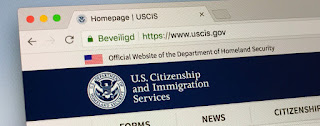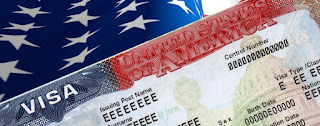Introduction
The U.S. Department of State (DOS) released its Visa Bulletin for July 2019 on June 6, 2019 [
PDF version]. The Visa Bulletin for July 2019 contains the final action dates and dates for filing for the family-sponsored and employment-based preferences for the month. The United States Citizenship and Immigration Services (USCIS) determined that most family-sponsored adjustment of status applicants — with the exception of one case — must use the dates for filing chart from the Visa Bulletin for July 2017, while employment-based adjustment applications must use the less favorable final action dates [
PDF version].
Below, we will examine the charts from the Visa Bulletin for July 2019, explain their significance to adjustment of status applicants during the month, and go over news and notes from the Visa Bulletin.
To learn more about using the immigrant visa bulletin for adjustment of status, please see our full article on the subject [
see article]. We have archived our articles on previous visa bulletins [
see archive]. We discuss the difference between the dates for filing and final action dates in a separate blog post [
see blog].
Family-Sponsored Cases
The USCIS has determined that approved beneficiaries of family-sponsored immigrant visa petitions in the F2A preference must use the final action dates from the Visa Bulletin for July 2019. While the dates for filing are generally more favorable than the final action dates, the USCIS's decision works in favor of these potential adjustment of status applicants because the final action date for the F2A preference in all chargeability areas is Current in July 2019. This means that the beneficiary of an approved family-sponsored immigrant visa petition in the F2A preference may apply for adjustment of status in July 2019 regardless of his or her priority date, provided that he or she is otherwise eligible for adjustment of status. The F2A preference is for the spouse or unmarried child (under the age of 21) of an alien lawfully admitted for permanent residence.
Below, courtesy of USCIS, is the final action dates for the F2A preference in July 2019 [
see here].
All other beneficiaries of approved family-sponsored immigrant visa petitions must use the dates for filing from the July 2019 Visa Bulletin to see if they are eligible to apply for adjustment of status during the month. The beneficiary of an approved family-sponsored petition in one of the family-sponsored preferences must compare his or her priority date to the applicable filing date for his or her preference category and chargeability area. If the beneficiary's priority date is earlier the applicable filing date cutoff on the Visa Bulletin for July 2019, the beneficiary may apply for adjustment of status provided that he or she is otherwise eligible for adjustment.
In most family-sponsored cases, the beneficiary's priority date is the date on which the immigrant visa petition was properly filed on his or her behalf with the USCIS.
The following chart, courtesy of USCIS, reflects the family-sponsored dates for filing from the July 2019 Visa Bulletin for all preference categories except F2A [
see here].
For reference purposes, the following chart reflects the final action dates for the family-sponsored preferences for the July 2019 Visa Bulletin [
see here].
Please bear in mind that only beneficiaries of petitions in the F2A preference should rely on the final action dates for assessing adjustment of status eligibility in July 2019. All other applicants must use the dates for filing.
Employment-Based Cases
The USCIS determined that all beneficiaries of approved employment-based preference petitions must use the final action dates from the July 2019 Visa Bulletin in order to determine whether they are eligible for adjustment of status during the month. The beneficiary of an approved employment-based preference petition must compare his or her priority date to the final action date cutoff on the Visa Bulletin for July 2019 for his or her preference category and chargeability area. The beneficiary of an approved employment-based preference petition will be eligible to apply for adjustment in July 2019 provided that his or her priority date is earlier than the final action date cutoff and he or she meets the other generally applicable requirements for adjustment of status.
For employment-based petitions where labor certification is required, the beneficiary's priority date will generally be the date on which the labor certification application was accepted for processing by the U.S. Department of Labor. In cases where no labor certification is required, the beneficiary's priority date will generally be the date on which the petition was properly filed with the USCIS.
Please note that a final action date or filing date of “C” stands for “Current.” For any preferences and chargeability areas with a priority date of Current, beneficiaries of approved petitions who are otherwise eligible for adjustment of status may apply for adjustment in July 2019 regardless of their priority date.
The following chart includes the employment-based final action dates from the July 2019 Visa Bulletin [
see here].
For reference purposes only, the following chart contains the employment-based dates for filing from the July 2019 Visa Bulletin [
see here].
As we explained, those seeking to apply for adjustment of status in an employment-based preference in July 2019 must use the final action dates, not the filing dates.
News and Notes From the Visa Bulletin for July 2019
The Visa Bulletin for July 2019 includes an unusual amount of news about final action date movement over the coming months. In this section, we will examine the news and notes from the July 2019 Visa Bulletin.
F2A Category Availability
The final action date for the F2A category became “Current” in July. DOS states that this priority date is expected to remain through September. The DOS made this decision in order to increase demand for visa numbers in the F2A category. It stated that although there is a large demand for F2A numbers, “currently there are not enough applicants who are actively pursuing final action on their case to fully utilize all of the available numbers under the annual limit.” Once enough F2A applicants pursue final action on their immigrant visa applications or adjustment of status, the DOS will again establish a final action date to control F2A number use within the annual limit.
This decision comes as good news for F2A applicants pursuing final action on their cases, whether through immigrant visa applications abroad or through consular processing in the United States. For the time being, these individuals will be able to take the final step toward becoming a lawful permanent resident without regard to priority date. Those who are ready to move forward on their cases may consult with an experienced immigration attorney for case-specific guidance.
Mexico Family-Sponsored and Employment-Based Availability
The DOS retrogressed the Mexico F1, F3, F4, E4, and SR final action dates for July in order to keep visa issuances within the annual numerical limits. This will continue through the end of the fiscal year. In October 2019, the DOS will return the final action dates for Mexico in these categories to the latest dates established in FY-2019.
E5 Availability for India and Vietnam
India and Vietnam will both reach their annual per-country limit in the E5 immigrant investor preference during July. For this reason, DOS established an E5 final action date for India and held the E5 final action date for Vietnam. In August, both India and Vietnam will be subject to the same E5 final action date that applies to China-mainland born applicants. This will persist for the rest of the fiscal year. In October 2019 — the first month of the next fiscal year — the E5 dates for Vietnam and India will advance. DOS expects that the E5 final action date for India will advance to the summer or fall of 2017, while the date for Vietnam will advance to the fall or early winter of 2016.
Visa Availability in Coming Months
The DOS listed its projection for visa movement in numerous preferences over the coming months.
Worldwide Dates (Family):
- F1: Up to five weeks.
- F2A: Current.
- F2B: Up to six weeks.
- F3: Up to six weeks.
- F4: Up to one month.
Employment First Dates:
- Worldwide: Little if any forward movement. Increased demand may require corrective action in September.
- China: Little if any forward movement.
- India: No forward movement. The date will return to February 22, 2017, in October.
Employment Second Dates:
- Worldwide: Expected to remain Current, but temporary corrective action may be required for September.
- China: Up to four months.
- India: Up to one week.
Employment Third Dates:
- Worldwide: Expected to remain Current, but temporary corrective action may be required for September.
- China: Up to several months.
- India: Little if any forward movement.
- Philippines: Will remain at the Worldwide date.
Employment Fourth Dates:
- Current for most countries
- El Salvador, Guatemala, Honduras, and Mexico: Little if any movement through September.
Employment Fifth Dates:
- Current for most countries.
- China: Too early to predict whether it will be possible to advance the China date to October.
- India and Vietnam: Will be subject to the same date as China during August and September.
Conclusion
Beneficiaries of approved preference petitions should stay abreast of movement in the monthly visa bulletins. This is especially important for adjustment of status hopefuls. Petitioners and beneficiaries may consult with an experienced immigration attorney for case-specific guidance and assistance.
Please see our website's categories on the following subjects to learn about some of the specific types of processes and visas discussed in this article:
Please visit the
nyc immigration lawyers website for further information. The Law Offices of Grinberg & Segal, PLLC focuses vast segment of its practice on immigration law. This steadfast dedication has resulted in thousands of immigrants throughout the United States.












